
Sin City is expanding into another dimension: underground. In June this year, two Las Vegas mega-hotels announced plans for their own stations and tunnel connections to the city’s convention centre. Wynn and Resorts World – a $3.4bn development due to open next summer – will be joining their tunnels onto a stretch already constructed between the main site of the Las Vegas Convention Center and a new exhibition hall.
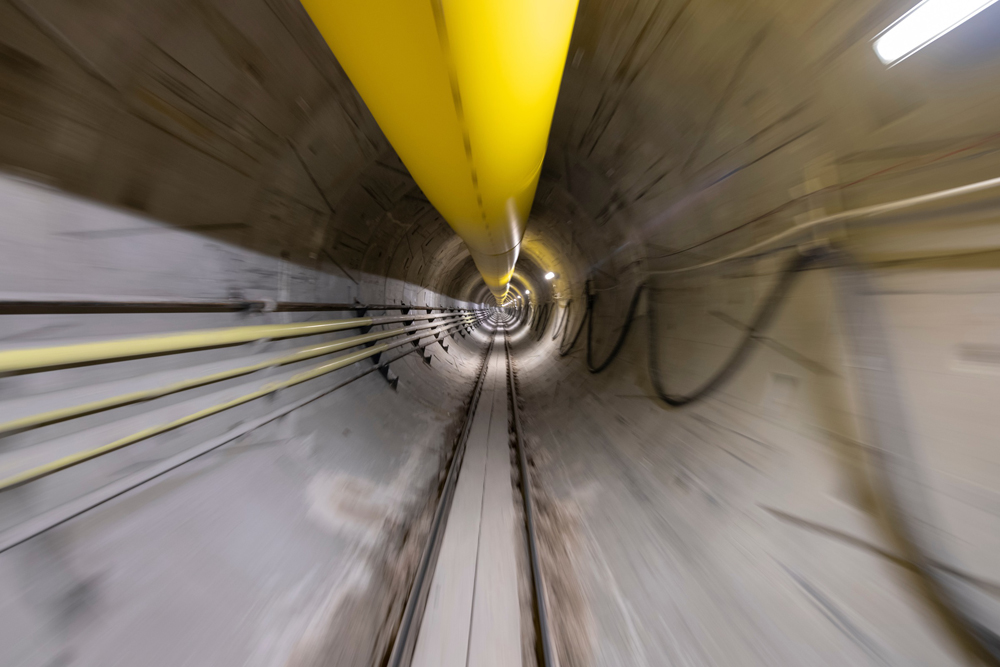
What makes this news particularly interesting is the constructor of the tunnel. It’s Elon Musk’s The Boring Company. The tunnelling project for the convention centre – the Las Vegas Convention Center (LVCC) Loop – is The Boring Company’s first commercial venture and is slated to open early next year. Before this project, the only boring that the company had done was a 1.8km-long test tunnel in Los Angeles.
These announcements mark one more step towards Musk’s vision of revolutionising travel by whizzing vehicles underground to avoid the annoyance of congestion, or – in the case of Vegas - walking. Whether they make the realisation of that vision any more likely is up for debate.
Life on Mars
Musk has had his sights on underground travel for a long time. He first mentioned the hyperloop concept – where specially-designed pods travel super-fast in tunnels with the help of vacuums – as far back as 2012, with plans to build a connection between Los Angeles and San Francisco. The development of the hyperloop idea is underway, with competitions between universities to create the fastest pod. One day, he hopes to build hyperloops on Mars…
He also has plans for several hyperloops on earth: in addition to the California connection, there is one between New York City, Philadelphia, Baltimore and Washington, DC; and another in Texas. There’s interest outside the US too. But, although Musk’s tweets sometimes seem to suggest that such projects are imminent, in reality they take years in planning and permitting, even with Musk’s formidable momentum behind them.
While hyperloop technology and project planning are still on the drawing board, Musk has already begun his exploration of the underground, through a slower version of hyperloop - called Loop. The FAQ section of The Boring Company’s website helpfully describes the difference: Loop is “a high-speed underground public transportation system in which passengers are transported via compatible AEVs (autonomous electric vehicles) at up to 155mph (250kph)”, whereas hyperloop is “an ultra-high-speed underground public transportation system in which passengers are transported on autonomous electric pods travelling at 600+ mph (965+ kph) in a pressurised cabin”.
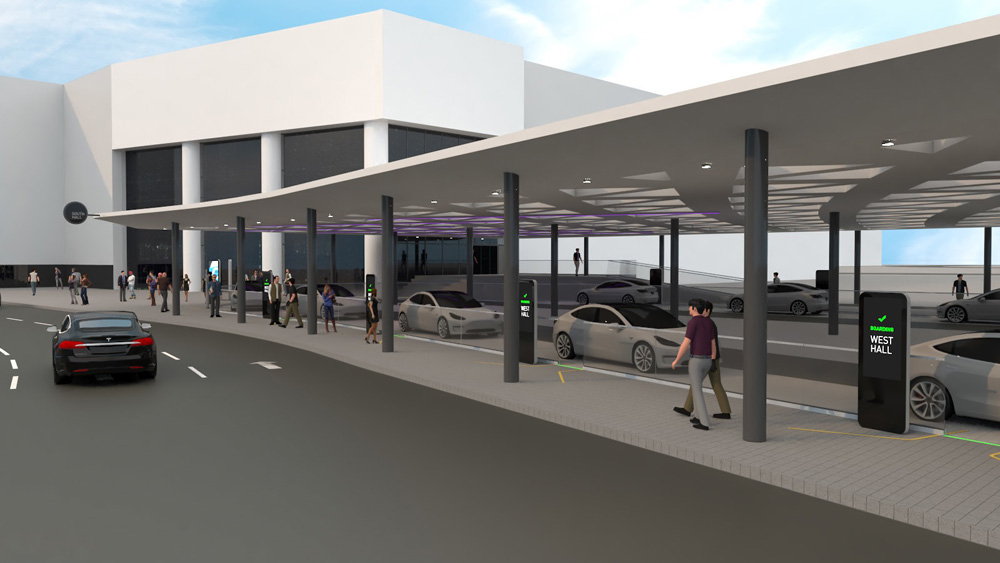
The first stretch of the hyperloop between New York City and Washington DC – from Baltimore to New York City – is now under consideration as the ‘East Coast Loop’. In April 2019, the US Department of Transportation announced that it had completed its environmental assessment for a 35.4 mile tunnel link that would involve electric vehicles travelling at up to a modest 150mph (240kph) underground.
There are other, much shorter, Loops in the early stages of planning and permission: the Dugout Loop which runs from central LA to the Dodger Stadium; another in LA between Rancho Cucamonga and the Ontario International Airport and the 29km (18 mile) Chicago Express Loop from downtown Chicago to O’Hare Airport.
Faster and cheaper
Meanwhile, Musk has dived into the world of tunnelling, putting noses out of joint by claiming that he can dig tunnels much faster and cheaper than the established industry does today. His first move was to buy a second-hand tunnel boring machine (TBM) made by Lovat, a now-defunct Canadian manufacturer, and dig a test tunnel with it in Hawthorne Los Angeles, under his SpaceX headquarters.
It is this cost element which could make what The Boring Company is doing so attractive for people who need tunnels to move passengers around increasingly urbanised areas: that is, transit and transportation agencies. But there is admittedly some way to go.
Musk tweeted in October 2017, as the test tunnel was under construction: “500 ft so far. Should be 2 miles long in three or four months and hopefully stretch the whole 405 N-S corridor from LAX to the 101 in a year or so.”
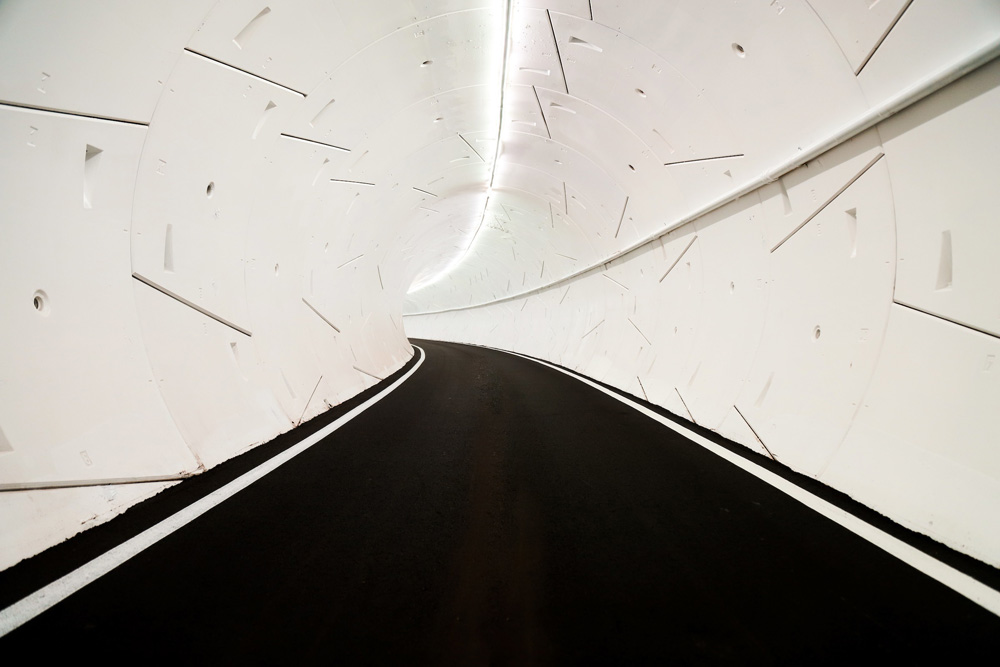
That did prove to be rather optimistic – but by December 2018 Musk was exciting journalists at a launch event by driving them through the 1.8km (1.1 mile), 3.7m (12ft) diameter test tunnel in Tesla Model X cars. They didn’t quite reach the 155mph mark; journalists reported it was more like 40mph (64 kph) with drivers rather than autonomous operation.
One change noted by some of the journalists was the way that the vehicles were conveyed through the tunnel. Early announcements suggested that cars would be carried through on electric ‘skates’, allowing faster speeds and closer spacing of vehicles. The test tunnel used a different system: a small set of retractable wheels that locked the vehicles onto the paved track.
The test tunnel also trialled the elevators that transport vehicles from street level down to the tunnel. The plan is that the elevators descend into side tunnels which then merge into the main tunnel.
There could be many of these ‘stations’ along a Loop route, says The Boring Company’s website, because they take up such a small footprint – equivalent to a couple of parking spaces. Having multiple entry points would reduce the congestion caused by having just one entry and exit point, argues the spiel.
Viva Las Vegas
In March 2019, the Las Vegas Convention and Visitors Authority announced that The Boring Company – which was formed as a subsidiary of SpaceX in 2017, becoming independent in 2018 - would construct a new tunnel between its existing main conference site to a new exhibition hall, a walk that could take up to 15 minutes. The project consists of two parallel tunnels, around 0.8 miles long with stations at either end, and one in the middle (unlikely that vehicles will reach 250kph here).
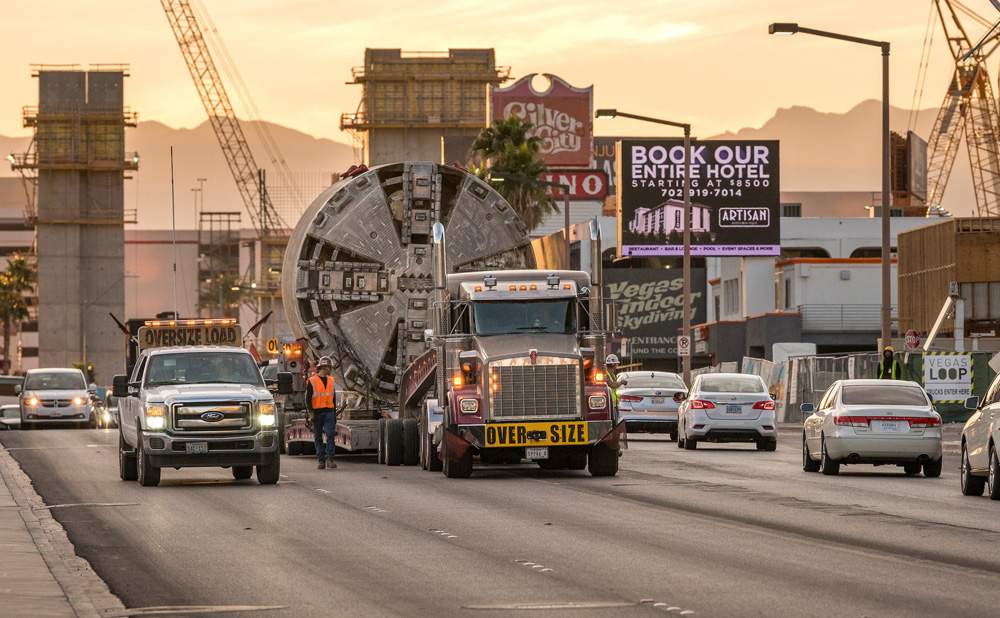
This tiny leg of loop is part of a far more ambitious plan to create an underground network of tunnels, the Vegas Loop, linking the different casinos along the strip to the conference centre, McCarran International Airport and even on to LA. Currently visitors to Las Vegas can choose to travel by taxi or by the monorail that runs parallel to the city’s main boulevard, The Strip.
The Vegas Loop will take ‘Standard AEVs’, according to the lvloop.com website, which it goes on to define as Tesla Model X and Model 3 vehicles and possibly a larger vehicle which uses a modified Tesla Model 3 chassis to transport up to 16 people. Presumably the city’s taxi and Uber drivers will all be investing in Teslas in the near future.
Boring for the LVCC twin tunnels began in November 2019, with the second one completed in May 2020. It is thought that this project was the first outing for the company’s in-house designed TBM, Line-Storm. This is said to be faster than a conventional TBM though not as fast as the next iteration, Prufrock, whose goal is to dig 10 times – if not 15 times – faster than its competitors. A very brief tweet in February this year announcing that “Prufrock Lives” suggests that development of this superior machine is underway.
The six months spent in Las Vegas to dig 2.6km (1.6 miles) of small-diameter tunnel has not set any world records. But the challenge with tunnelling is that the speed of excavation is not just dependent on how fast your TBM can dig. All the logistics that support the machine – muck out, tunnel lining segments in - must run smoothly and quickly.

Musk has said he can build his tunnels for as little as $10m per mile. The LVCC Loop, with a published construction cost of $48.6m is clearly a long way above that. One of the aspects that makes tunnelling projects expensive is the need to price for risk. Mother Nature can throw in some costly surprises - as The Boring Company found out when heavy rainfall caused flooding in the tunnel in March this year.
The March flooding prevented a scheduled visit to site by journalists, including ITS International. With the site visit cancelled, ITS tried several times to secure an interview with The Boring Company, without success.
The right questions?
Many questions remain around Musk’s plans and claims around underground transport. Will his Loops ever be able to convey 4,000 vehicles per hour at 250kmh (155mph) as The Boring Company website claims? Can he really improve TBM technology to bore 10 times faster than the current best-in-class?
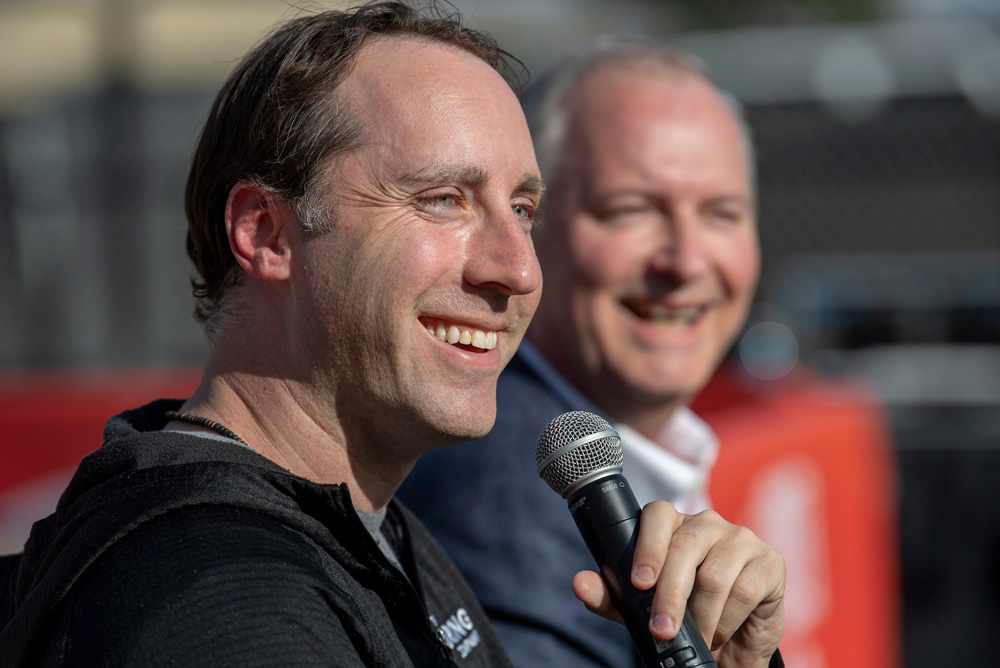
The company is attempting to answer by just getting on and trying to do it, experimenting on real-life projects, all of which are privately funded (and with The Boring Company taking on who-knows-how-much risk). Many engineers would give their eye teeth to be involved in R&D like this.
And maybe when Musk asks: “But why do you do it like that?”, planners and engineers and operators should listen a little bit harder. He may be right to point out that it isn’t that smart to dig large-diameter, double-decker tunnels which are extremely expensive and risky to construct.
Planners and constructors could learn a lesson or two about marketing too. Never before have so many effusive words been written about so few miles of road tunnel.











